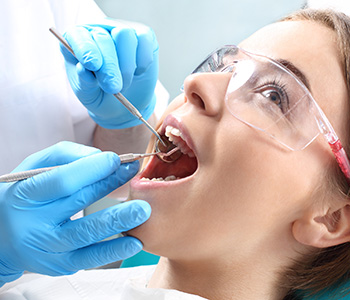Greensboro patients protect your teeth from harmful bacteria with a dental sealant!

Tooth decay often occurs to the chewing surfaces of rear teeth. Dr. Sona at Triad Pediatric Dentistry in Greensboro can protect these teeth by applying a sealant.
What causes Decay?
Teeth are coated with a sticky film of bacteria. Bacteria turn the sugars you eat and drink into harmful acids that attack the enamel of your teeth. Eventually, this will weaken the teeth and cause cavities.
What is a sealant?
A sealant is a material that is applied to the chewing surfaces of your back teeth. The material flows into the nooks and crannies of these teeth and hardens, essentially forming a barrier against acid attacks.
How are sealants applied?
Your teeth are cleaned and the surfaces are prepped to help the sealant stick. The sealant is then painted on to all chewing surfaces where it bonds and hardens. In some cases, a special light is used to help the sealant harden. Each tooth takes only a few minutes to seal.
How long do sealants last?
A sealant can last several years. As long as the sealant remains undamaged it will continue to protect your teeth from decay. During regular checkups at our office Dr. Sona will check the teeth sealant and reapply if needed.
Good early oral wellness is critical to a healthy, attractive smile as an adult. That is why it is important to protect teeth and keep them strong, beginning at a young age. Children should have sealants applied to molars and premolars as soon as these teeth come in. This allows the sealant to protect their teeth between the ages of 6 and 14, the years that children are most likely to develop cavities. Call Triad Pediatric Dentistry in Greensboro, NC at (336) 804-8668 to schedule an appointment to get your children’s teeth protected.
Dental Sealants explained by Dr. Sona Isharani

Dental Sealants are preventive coating using to protect the back teeth.
The back teeth are hard to clean with just the toothbrush and the food can get caught in between causing a cracked driveway.
Food breaks down into carbohydrates, feeding bacteria and resulting in tooth decay.














